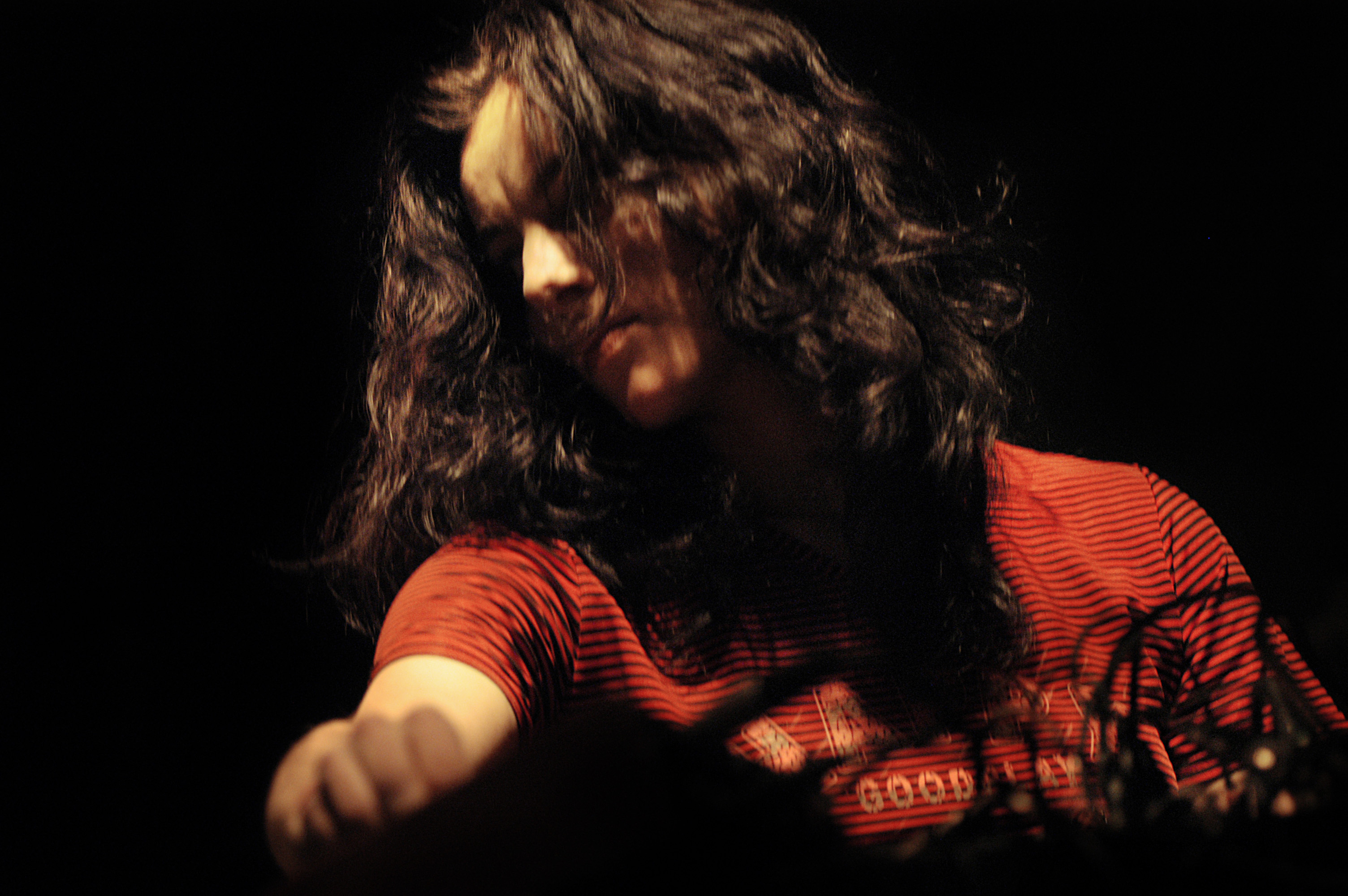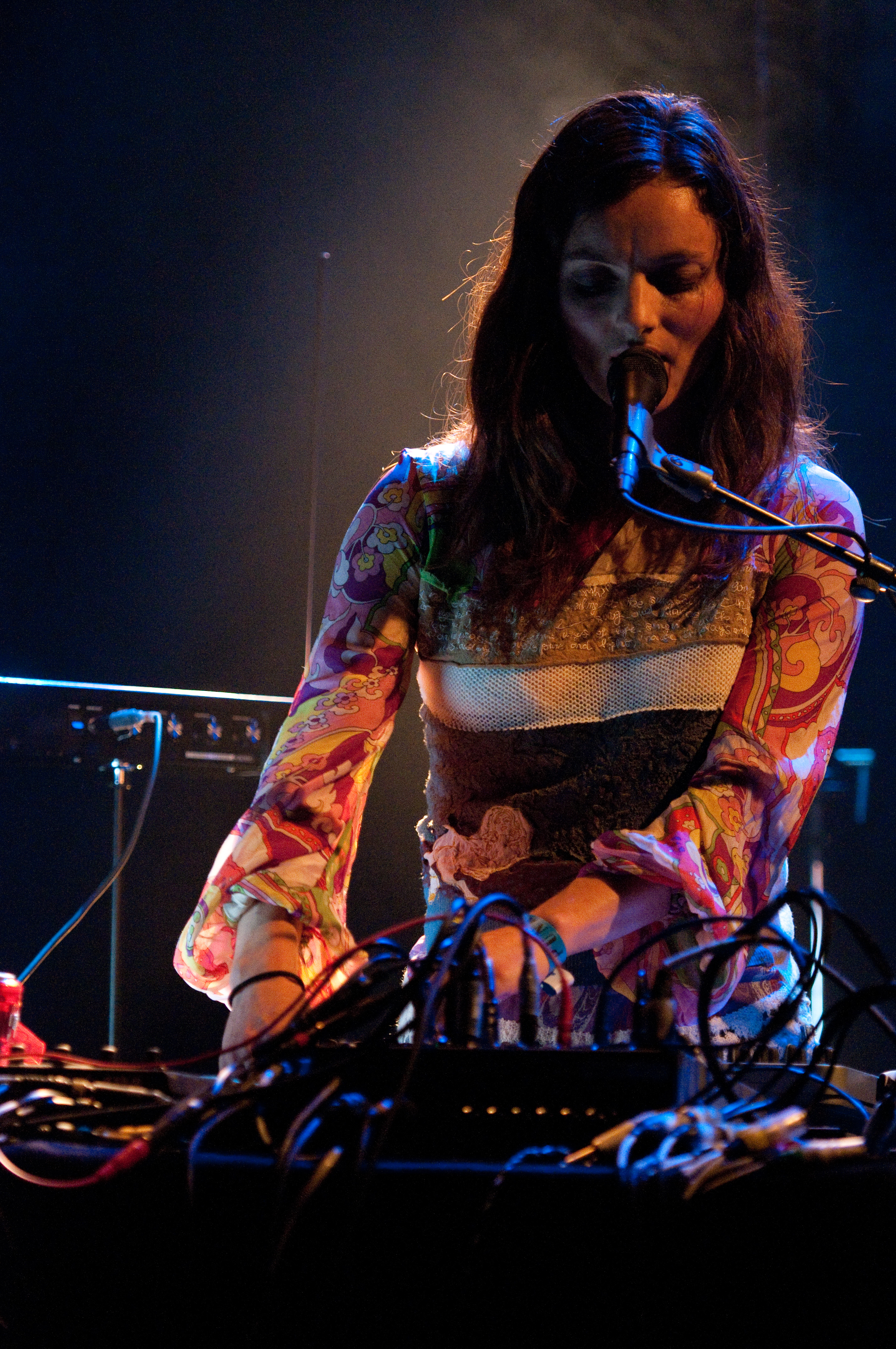Side 1: About the Technique
a. What is the relationship between composition and improvisation?
Besides composing, the performances I have done over the last twenty years using vocals, often with live electronics, and most often in an improvised setting, has also greatly influenced my composing, my methods and thinking about form, timbre, and the aspect of communication. I have also felt, while composing, the challenge of grasping some of that immediacy a performance gives. Over the last years I have combined performance and improvisations more and more with more traditional composing, perhaps starting with the Concerto for Voice which features me as an improvising soloist with an orchestra.
b. Is the improvised voice distinct from the composed/ written voice?
The solo record Voice that was my first main release utilizing the voice as the only sound source was a manifestation of my work as combined composer and performer. It was composed in studio over a couple of years, but I have not written any scores, as if the music was meant to be reproduced in concert – which it isn’t. Also I see no need to write on paper a language that is supposed to transcribe my vocalizing, I can do with small notes and descriptions. In that way I ‘not recede the vocal performance to relate to a score. For me that would feel limiting. When I compose for classical instruments, let’s say for string quartet, however nothing is left to the imagination for the performer. There is already a developed musical notation language for other instruments that I feel covers what I need. And I have not written much extreme sounds for other singers, so I have not had the need to develop a written language.
c. At what level is the technology intertwined with the word? What is the relation between the voice and the machine?
Electronic music and computers are essential in my work, both as performer and composer, as exemplified in some of the answers above. I use tools on all levels, but I don’t work with algorithmic composition, I dislike giving the compositional choices, even on the level of details, to the computer. I use analysis, filters and synthesis a lot in my work, in scores as well in performances with live-electronics.
In my own work, I treat the word as a source of sound. I try to break down the semantics of language and leave a hint of meaning with something ‘word-like’.
However in my composed/written work, I have collaborated with several Norwegian authors and used other written sources such as the Nag Hammadi Library and written vocal works including operas, tangos, tunes, contemporary music and theatre music for other singers, and also that I have performed in myself.
d. To what extent does a tool or a medium influence the shape of the sound (and vice-versa)?
It’s absolutely clear to me that I have been influenced by electronic sounds and electronic manipulation of the voice, even when improvising with just the pure voice and no other electronic tools than the microphone. Electronic sounds have inspired me to find and imitate sounds with my voice that I otherwise wouldn’t have been thinking of.
Vice-versa, it’s obvious that the way I treat electronics is influenced by the way I shape my voice when vocalizing, also influenced by the complexity and the organic shifts in the voice as an instrument, but perhaps most of all by the breath, by the phrasing of a vocal sound within a musical context. However when I play electronics I most often work with those tools as if I am dealing with an orchestra with many different sound sources, and that some of them, for example a tone generator, are by nature in contrast to the human breath.
Side 2: About the Poetic of the Act
e. How do you define your act? Is it sound poetry? Sound art? All of them or none of them? Are these definitions important to your work?
Such definitions is least important to my work. And the harder for other people to make, especially concerning my work which people keep saying cross so many of the borders of those and other definitions. For me it doesn’t feel like I am crossing any borders, my work feels whole and consistent and I am very focused on the “language” of each work, trying to define the certain qualities that each work carry.
f. How does your voice relate to music, to chant and to word? Which (concept of) sound do you aim to achieve?
Floating across the borders that constitute language and sounds, and aiming at including all sounds intended or not, played or heard in the room elsewhere as potentially meaningful, and a part of the act of communication that a musical performance is.
All my projects, even art projects that are far from being a concert, relate to and emanate from sound. For me there is no distinction between sound and music, but sound has to be musically intended by someone who presents it, or includes it in the performance, and that can be the performer or the receiver who decides if it is a part of the music.
g. Is there always a notation for voice?
Since I already mentioned the voice concerto, I can start with that. The piece exists in several versions, the first commissioned by Radio France for the Festival Présences in 2004. The challenge was to make a piece for orchestra featuring myself as a soloist. I quickly decided that my part had to be very free, making use of my long training as improviser. I also decided not to bring in live electronics for this concert, just some amplification of small sounds that could bring up interesting and perhaps unheard constellations of sounds, small or large, acoustic or amplified in the concert space. My voice is hence amplified the whole time, together with a second soloist playing an old-fashioned typewriter. Another limitation is to strictly use the voice as an instrument, with no text or narrative other than the various sounds, pitched or unpitched coming from my mouth. The orchestra part is composed to respond to my highly individual vocal sounds and sometimes I also let go in improvised vocal sections building on the orchestral score. In Concerto for Voice I deal with so-called spectral harmonies, in this case as a part of a series of works with the subordinate title moods deploying the analysed spectrum of the lowest tone of a tenor saxophone played as in jazz. The score is largely based upon an transcription (a slightly impossible task!) of an earlier electronic piece, Sinus Seduction (moods two), using the same tenor saxophone manipulated with distortion, filtering out it’s 29 strongest overtones and linking three multiphonics with common overtones as basic building material. A version for sinfonietta will be released on the record label 2L this year.
h. Could one take them as a notation system and read it again? Could any of your performances/ improvisations be repeated, by you or by someone else, in exactly the same way?
No and no.
Interview by: Nuno Miguel Neves and Tiago Schwäbl

